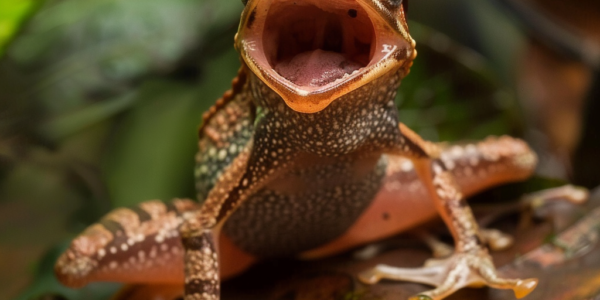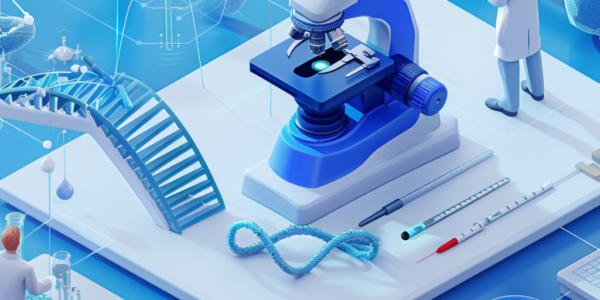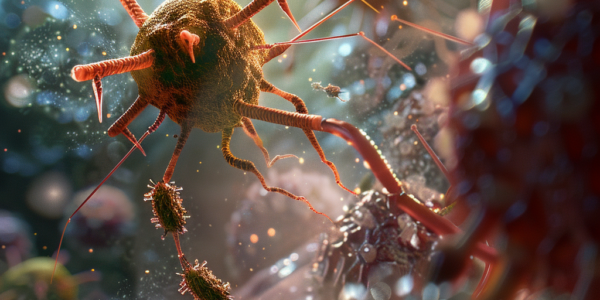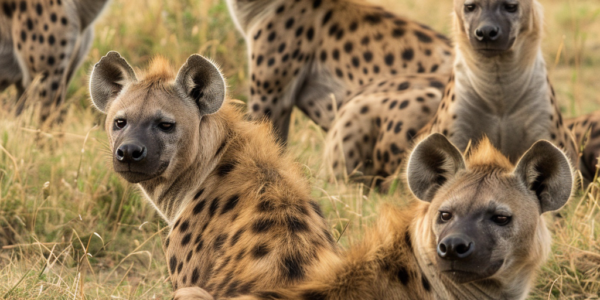Frogs in Amazon Jungle Found to Scream at Inaudible Frequencies
Scientists in Brazil have discovered that some frogs in the Amazonian jungle are using defensive ultrasound as a distress call, inaudible to humans. This fascinating finding sheds light on the intricate ways animals communicate and interact in their natural habitats.
Glowing Garden: Genetically Modified Bioluminescent Petunias
Discover the new genetically modified bioluminescent petunias that glow in the dark, bringing joy and magic into our lives. Developed by Keith Wood, Ph.D. and his company Light Bio, these petunias have bright, white flowers that light up with a greenish, white glow in the dark, resembling fireflies. Using genes from a bioluminescent mushroom and a fungi, the plant is self-sustaining and does not require an extra chemical to light up.
CRISPR Technology: Revolutionizing Medicine and Healthcare
The approval of the world’s first CRISPR therapy to treat sickle cell disease and beta-thalassemia patients signifies a significant milestone in the field of gene editing. CRISPR technology has potential applications in targeting and treating various types of cancer, combating AIDS, addressing cystic fibrosis, muscular dystrophy, Huntington’s disease, blood disorders, and even COVID-19. As CRISPR technology continues to advance, its potential applications in medicine and healthcare are expanding, offering new avenues for personalized medicine.
Pregnancy linked to increased biological ageing in women, study finds
A study from the Columbia University Mailman School of Public Health found that pregnancy may accelerate biological aging in women. The research, published in the Proceedings of National Academy of Sciences, revealed that each individual pregnancy reported was linked with an additional two to three months of biological aging. The study also showed that women who reported more pregnancies during a six-year follow-up period experienced a greater increase in biological aging. These effects were observed even after accounting for socioeconomic status, smoking, genetic variation, and the built environment in participants’ surroundings.
Aerobic Exercise in Later Life Prevents Genomic Instability, Study Finds
Study from the University of Utah suggests that regular aerobic exercise in later life can prevent DNA damage and telomere dysfunction, potentially reducing the risk of cardiovascular disease-related mortality. The study, presented at the American Physiology Summit, highlights the positive impact of exercise on genomic stability and vascular health.
Attack and defence in the microverse
Research team at University of Jena examines the interaction of attack and defence strategies when cholera-causing bacteria are infected with a bacteriophage. Tiny RNA molecules play a decisive role in the complex interaction. The findings have been published in Cell Host & Microbe.
Epigenetic Signatures of Social Inequality in Spotted Hyenas
Research on spotted hyenas in Tanzania shows that social status affects gene activation at the molecular level, impacting physiological processes such as energy conversion and immune response. The study sheds light on the role of epigenetic mechanisms in the interplay of social, environmental, and physiological factors in highly social mammals.
Pregnancy’s Effect on Biological Age
Pregnancy can have a significant impact on biological age, with new research showing a reversal of aging effects after delivery. The study from Yale University highlights the potential for bodies to bounce back from the changes of pregnancy, but researchers emphasize the need for further understanding of the mechanisms at work.
New Epigenetic Clock Modeled on Cheek Swabs Offers Non-Invasive Approach to Predict Biological Age
Learn about the new non-invasive epigenetic clock that can predict a person’s biological age using cheek swabs, offering potential for precision medicine. Understand how epigenetic clocks work and how DNA methylation is correlated with age, providing a predictable pattern to trace a person’s biological age.
Nematodes Discovered in Great Salt Lake, Challenging Long-Held Beliefs
Scientists at the University of Utah have discovered a third form of multicellular life in the Great Salt Lake – nematodes, or worms, thriving in its ultra-saline waters. This groundbreaking finding challenges long-held beliefs about the lake’s biodiversity and expands the understanding of nematode adaptability in extreme environments. The study’s use of advanced molecular techniques underscores the significance of the discovery, opening new avenues for research into the adaptability of organisms in hyper-saline environments.










